Does Damien Hirst still hit the spot?
6 min read
Damien Hirst’s first career survey in Germany serves up a silicone cow head and wheels out the bejewelled skull
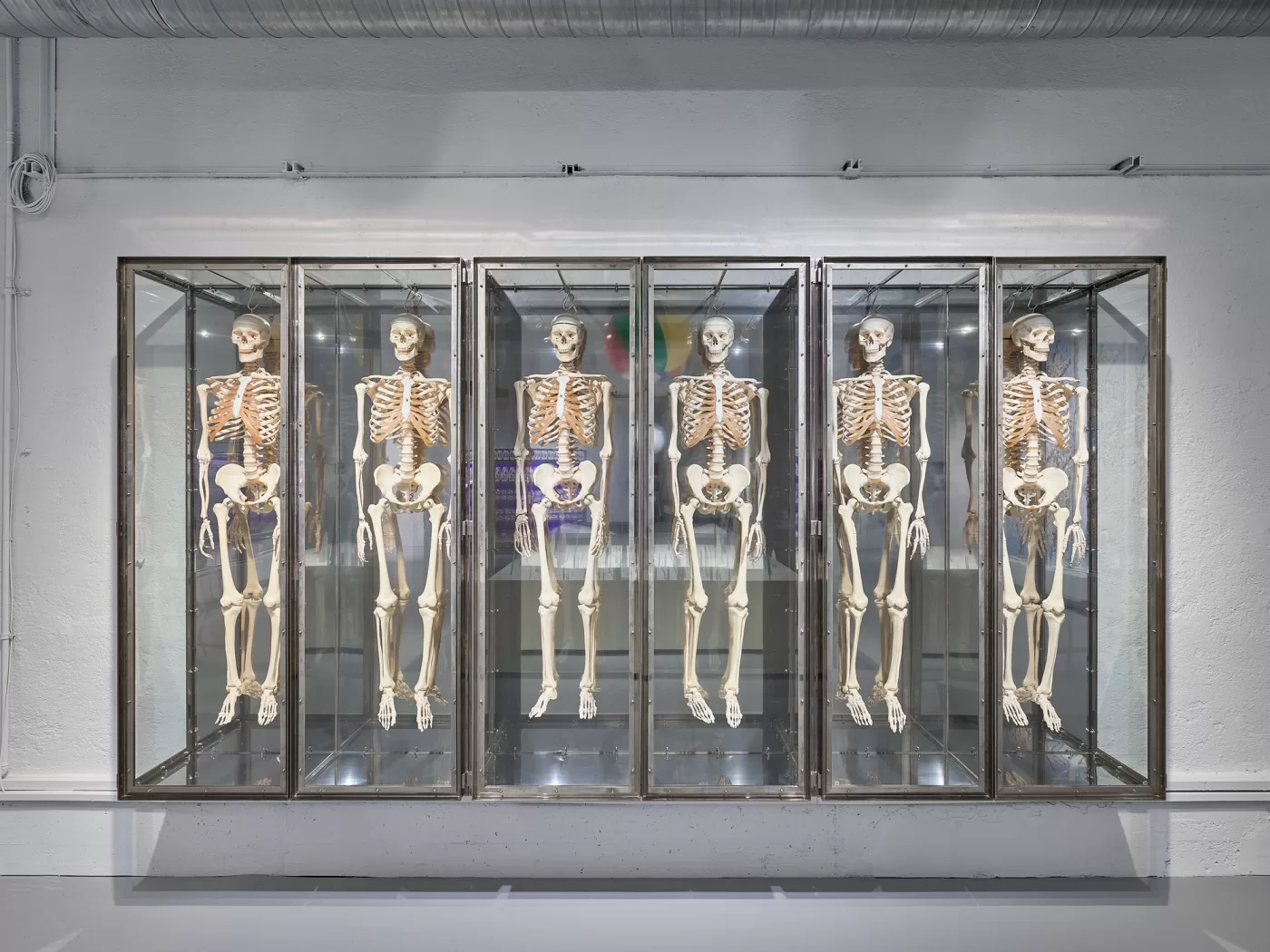
Damien Hirst: The Weight of Things at the Museum of Urban and Contemporary Art (MUCA), 2023. Photographed by Prudence Cuming Associates Ltd. © Damien Hirst and Science Ltd. All rights reserved, DACS/Artimage 2023.
Since establishing himself as the disruptive enfant terrible of the British art world during the late 1980s, Damien Hirst has delighted in goading our most morbid, rubbernecking impulses. Hirst’s obsession with mortality has played out dramatically via severed cow heads, formaldehyde sharks and electrocuted flies. In, ‘The Weight of Things’, a new survey at Munich’s Museum for Urban and Contemporary Art (MUCA) invites viewers to consider whether, several decades on, they still land with the same visceral force.
Perhaps surprisingly, this is Hirst’s first-ever institutional show in Germany. Spanning three decades of work, the show has been personally curated by Hirst and features many of his best-known works across painting, installation and sculpture. But some versions have been watered-down.
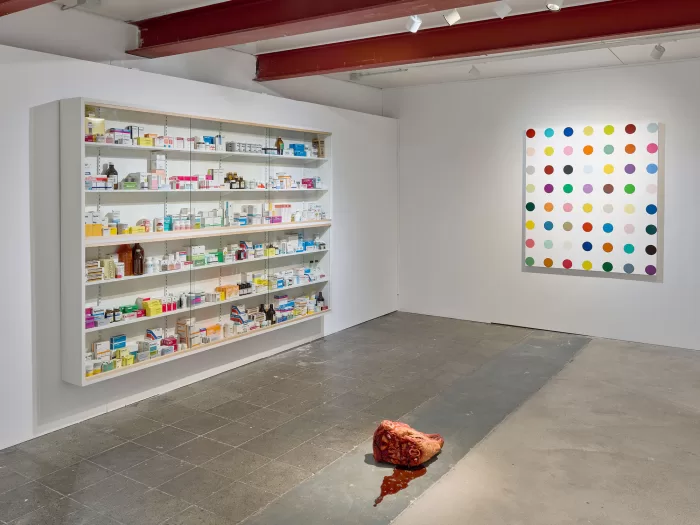
Damien Hirst: The Weight of Things at the Museum of Urban and Contemporary Art (MUCA), 2023. Photographed by Prudence Cuming Associates Ltd. © Damien Hirst and Science Ltd. All rights reserved, DACS/Artimage 2023.
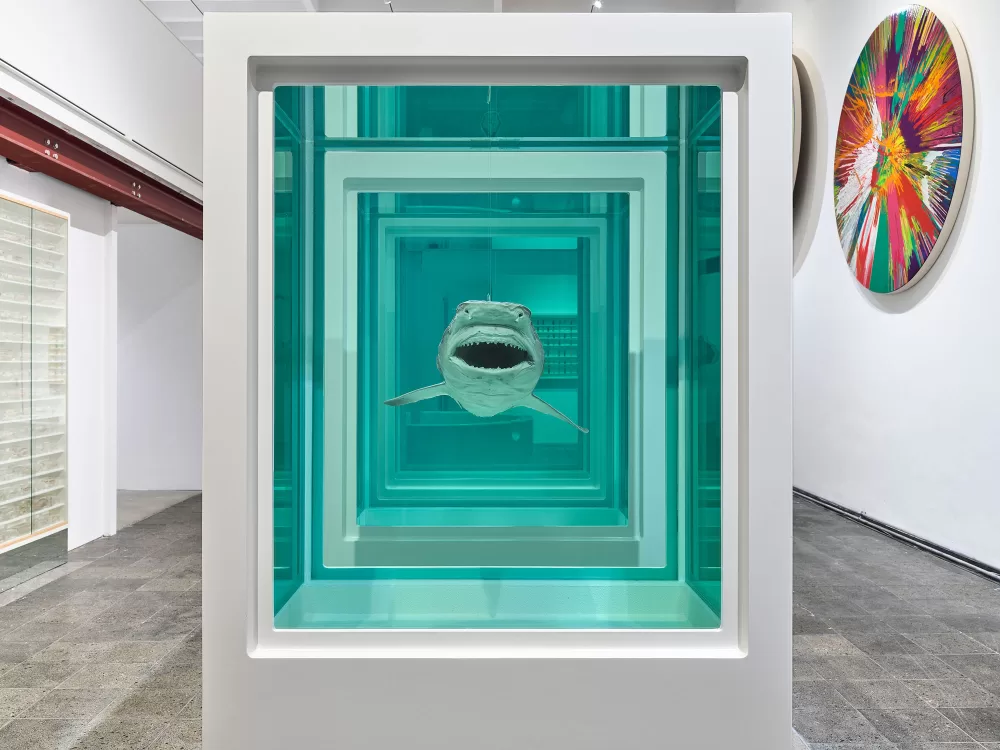
Damien Hirst: The Weight of Things at the Museum of Urban and Contemporary Art (MUCA), 2023. Photographed by Prudence Cuming Associates Ltd. © Damien Hirst and Science Ltd. All rights reserved, DACS/Artimage 2023.
In Jeepster (1993) for example, a flayed cow’s head lies on the floor, oozing a crimson pool from the gaping wounds in its neck. But unlike the original iteration of his groundbreaking A Thousand Years (1990), in which the use of an actual cow’s head formed an integral purpose, this silicone stand-in elicits no great sense of unease. Likewise, the unexpectedly small tiger shark in the adjacent tank lacks the shock value of its original predecessor, The Physical Impossibility of Death In The Mind of Someone Living (1991), in which the scale was sufficient for the viewer to feel as though they could be in the tank themselves.
However, Hirst’s early works continue to act as powerful memento mori, and still resonate today. In his medicine cabinets, for example, floor-to-ceiling Wunderkammers of glass and steel that nod to the polished minimalism of Jeff Koons and Donald Judd, Hirst toys with our veneration of modern medicine as a shield against death and decay. The austere beauty of these cabinets, with their meticulous rows of packaged prescription drugs and brightly coloured pills, feel more sinister still in light of all that we now know of America’s opioid epidemic.
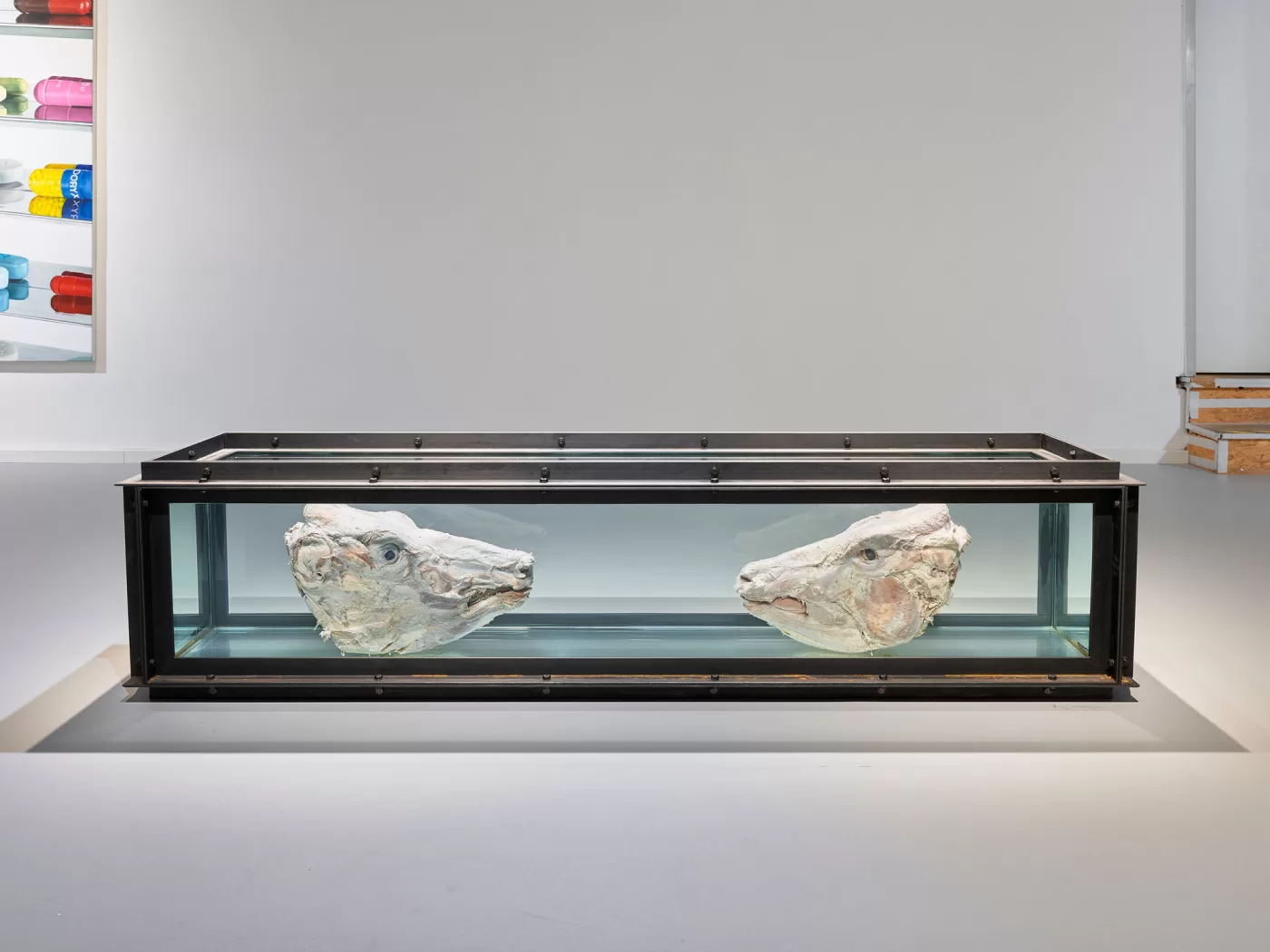
Damien Hirst: The Weight of Things at the Museum of Urban and Contemporary Art (MUCA), 2023. Photographed by Prudence Cuming Associates Ltd. © Damien Hirst and Science Ltd. All rights reserved, DACS/Artimage 2023.
In contrast to the protection we seek from death, Dead Ends Again (1999), demonstrates our self-destructive race towards it. The rows of charred cigarette butts, juxtaposed with their clinical setting, reveal the often contradictory relationship between death and pleasure, with each lipstick-stained butt representing a fleeting moment of toxic indulgence.
In Hirst’s world, the boundary between sacred and profane is constantly blurred, yet his engagement with death remains constant. Entombed in a bunker neighbouring the museum is his legendary diamond-encrusted platinum skull, For The Love of God (2007). This ancient symbol of vanitas crops up time and again in Hirst’s work, but here he subverts it into something sublime, a grandiose statement of victory against mortal flesh and a timeless relic representing death as something to be worshipped, not feared.
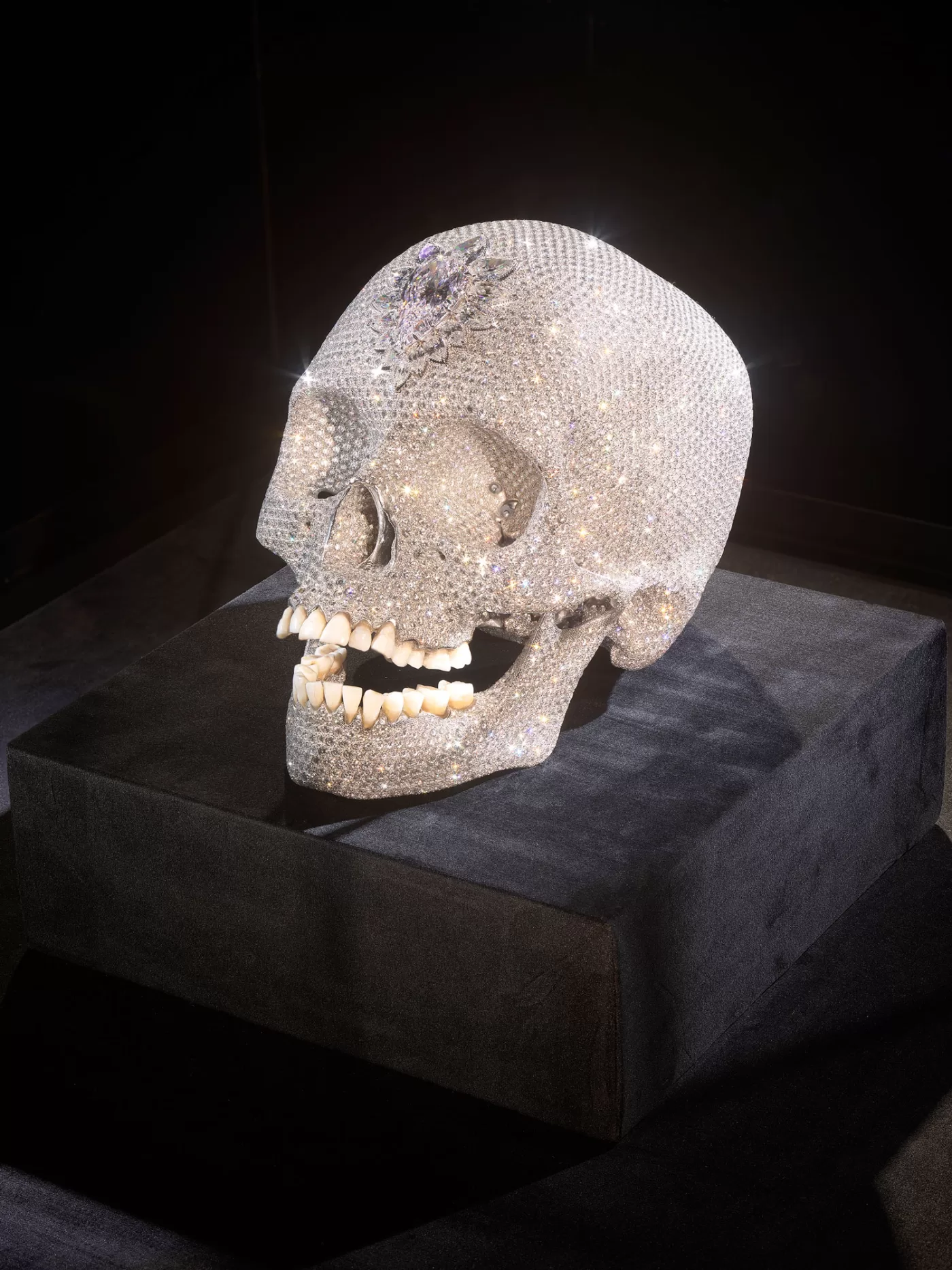
Damien Hirst: The Weight of Things at the Museum of Urban and Contemporary Art (MUCA), 2023. Photographed by Prudence Cuming Associates Ltd. © Damien Hirst and Science Ltd. All rights reserved, DACS/Artimage 2023.
Pervasive themes of life and death run throughout Hirst’s work, undoubtedly a consequence of his Catholic upbringing and early fascination with its violent iconography. At the opposite end to his embellished skull and preserved sharks, The Fragility of Love (2000) builds upon these very ideas with a more delicate, sparing touch. The plastic beach ball held aloft a bristling assortment of blades by a jet of air is not just a powerful symbol of life’s precarity but turns the inevitability of our own demise into a joyful performance. Taken together, this exhibition has all the necessary components for a first introduction of this artistic phenomenon to a new country. And yet, for all of the eternal questions that Hirst grapples with, one can’t help but wonder whether in 2023 it all feels a little over-pickled.
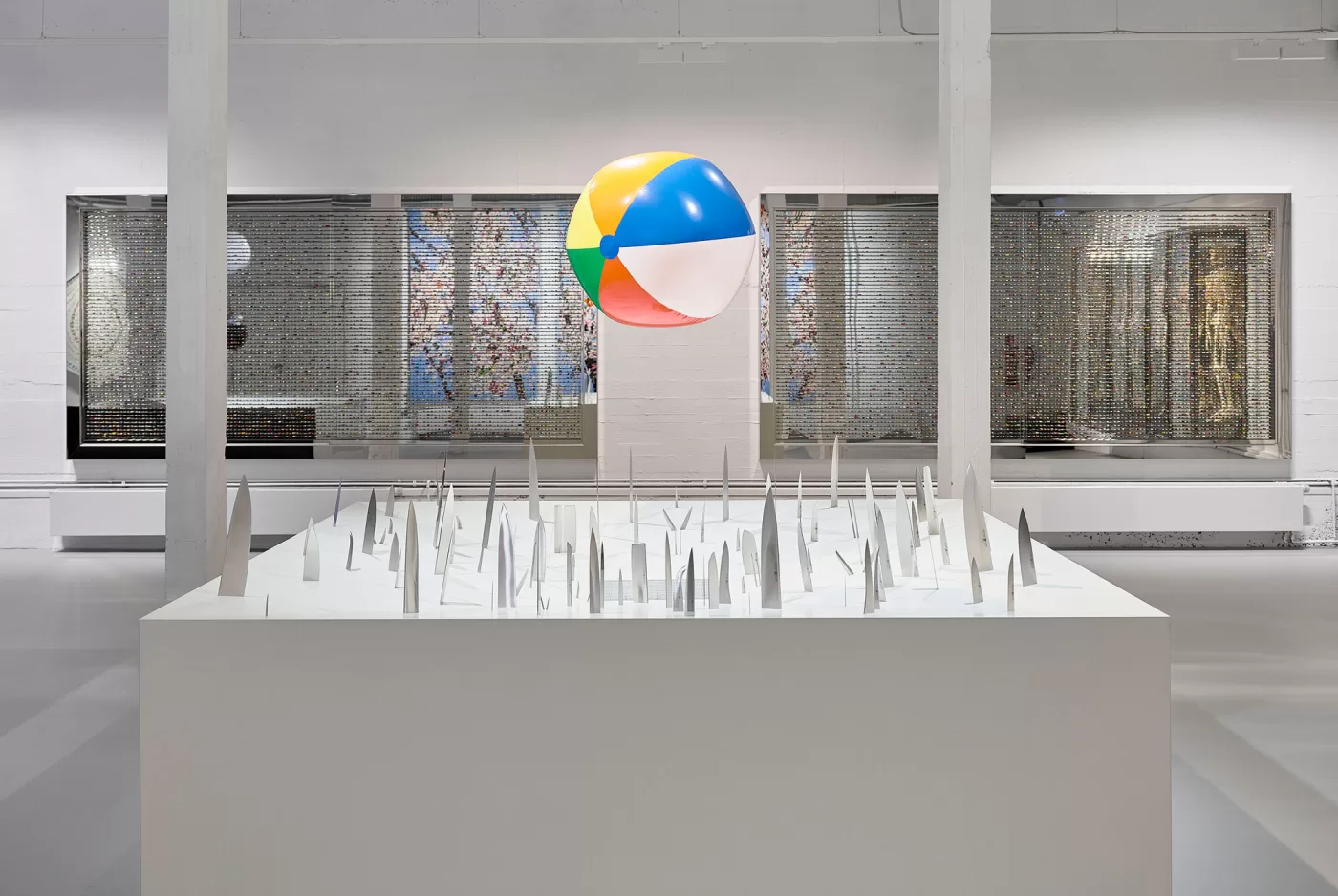
Damien Hirst: The Weight of Things at the Museum of Urban and Contemporary Art (MUCA), 2023. Photographed by Prudence Cuming Associates Ltd. © Damien Hirst and Science Ltd. All rights reserved, DACS/Artimage 2023.
Damien Hirst, ‘The Weight of Things’ at Munich’s Museum for Urban and Contemporary Art is on view until autumn 2024. muca.eu